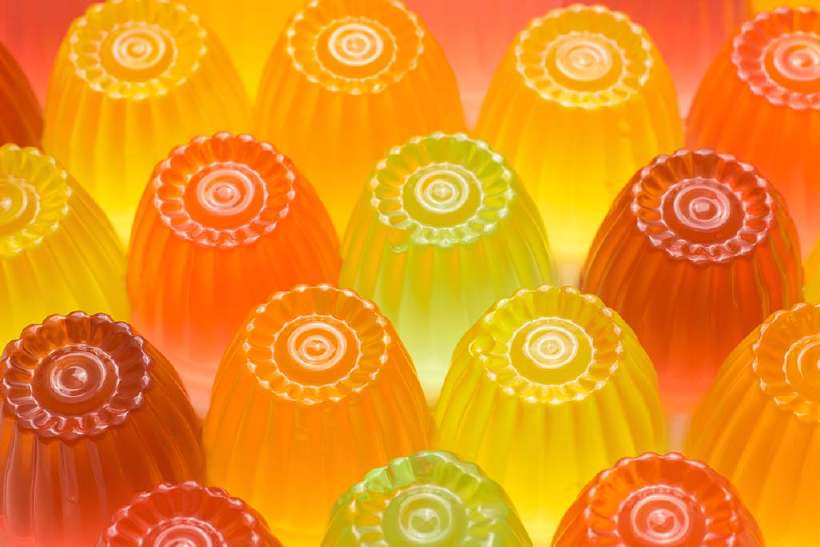How Is Jelly Formed?
Home / Science for Kids / 5Ws & H For Kids / How Is Jelly Formed?
Had a good dinner? Now how about some cool custard with jelly on the side for dessert? Doesn’t the jelly look inviting, a transparent red-coloured blob sitting pretty on the plate, making you long to dig your spoon into it?
Called Jell-O in the United States of America, jelly changes shape with the change in temperature. It stays sets at room temperature, which is between 0 degrees and 20 degree C. Warm it to about 27 degree C and watch it disintegrate into a watery mixture. Cool it and it thickens until it sets again.
Do you know what substance makes jelly set? It is gelatin, a special gel-making agent. Gelatin is made from collagen, which is a fibrous protein found in certain tissues in animals’ bodies. So, your plate of jelly is actually a non-vegetarian dessert!
Gelatin is made when animal skin or bone is boiled in water. Strands of collagen separate out of the tissue and react with water to become gelatin. Even one per cent of collagen, when dissolved in water, will make the gel. Gelatin contains millions of long chains of protein that separate into tiny filaments when mixed with warm water.

Each filament attracts water molecules to itself. This reduces the number of water molecules free to flow through the mixture. As the mixture cools, the water-rich filaments begin to bump into one another and intertwine. The remaining water gets confined within a thicket of protein filaments and the mixture thickens into a gel.
Gelatin is used in other foodstuffs like marshmallows and ice creams as well. It is also used to bind chemicals used in photographic film, in pharmaceuticals and glue.
Did people use gelatin before it was sold in shops? Yes. People made gelatin at home. And that meant boiling bones, or using isinglass, a kind of gelatin obtained from fish.
But today, apart from gelatin, starch and pectin are also used to gel or thicken foodstuffs. Starch is used to thicken sauces and to make confectionaries like Turkish Delight. Pectin, which is obtained from fruit, binds fruit preserves.
Starch and pectin are types of sugars formed into long molecular chains. Also called complex carbohydrates or polysaccharides, they are excellent sources of food energy. But gelatin is not. Since it lacks an essential amino acid, gelatin does not have high protein content.
393 words |
3 minutes
Readability:
Grade 7 (12-13 year old children)
Based on Flesch–Kincaid readability scores
Filed under: 5ws and h
Tags: #filaments, #molecules, #water molecules
You may also be interested in these:
How do Spiderwebs Help Skydivers?